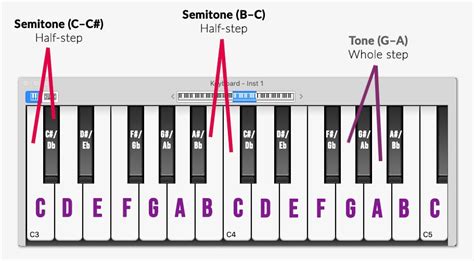How to Pitch Shift a Semitone: A Guide for Musicians and Producers
Pitch shifting a semitone—raising or lowering a musical pitch by a half-step—is a common technique used in music production and performance to create a variety of effects. Whether you're fine-tuning vocals, adding subtle harmonies, or creating dramatic sonic shifts, understanding how to effectively pitch shift a semitone is a valuable skill. This guide will explore various methods, catering to different levels of technical expertise.
Understanding Pitch Shifting
Before diving into the "how-to," let's clarify what pitch shifting actually entails. A semitone is the smallest interval in Western music. Pitch shifting involves altering the frequency of an audio signal, effectively changing its perceived pitch. Shifting up a semitone increases the frequency, while shifting down decreases it. The result can be subtle or dramatic, depending on the implementation.
Methods for Pitch Shifting a Semitone
Several methods exist for achieving a semitone pitch shift, each with its own advantages and drawbacks. Here are some of the most common approaches:
1. Using Digital Audio Workstations (DAWs)
Most DAWs (like Ableton Live, Logic Pro X, Pro Tools, FL Studio) offer built-in pitch-shifting capabilities. This is often the most convenient and versatile method.
- Features to Look For: Many DAWs incorporate high-quality pitch correction algorithms (like élastique Pro) that minimize artifacts and maintain a natural sound. Look for options that allow for real-time processing and fine-grained control over the pitch shift amount.
- Workflow: Generally, you'll select the audio region you want to pitch shift, find the pitch-shifting effect (often labeled "Pitch Shifter," "Auto-Tune," or similar), and adjust the semitone value to +1 (up) or -1 (down).
2. Dedicated Pitch Shifting Plugins
Beyond DAW's built-in tools, numerous specialized pitch-shifting plugins offer advanced features and improved audio quality. These plugins often employ sophisticated algorithms to minimize artifacts like pitchiness and distortion, especially useful for larger pitch shifts or complex audio. Some popular options include (but are not limited to):
- Antares Auto-Tune: While primarily known for its auto-correction capabilities, Auto-Tune can also be used for subtle pitch shifting.
- Melodyne: Known for its ability to manipulate individual notes within a recording, Melodyne offers precise pitch shifting control.
Remember to explore the many available options; each plugin has its own strengths and characteristics.
3. Hardware Pitch Shifters
For those who prefer a hands-on approach, dedicated hardware pitch shifters offer real-time processing and can add a unique character to the sound. These devices are often integrated into guitar effects pedals or rack-mounted units. They can introduce a vintage-style pitch shifting sound that’s difficult to achieve with digital plugins. However, they can also be pricier than software solutions.
4. Using Audio Editing Software (Less Recommended for Semitones)
While you can use basic audio editing software (such as Audacity) to change the playback speed, this isn't ideal for subtle pitch shifts like a semitone. Changing the playback speed usually alters the tempo as well, resulting in a less desirable effect for musical applications requiring precise pitch control. This method is better suited for larger, more dramatic pitch changes.
Tips for Successful Pitch Shifting
- Start small: Begin with minimal pitch adjustments and gradually increase as needed.
- Listen critically: Pay close attention to the audio quality. Excessive pitch shifting can introduce artifacts like artifacts.
- Experiment: Explore different methods and plugins to find what works best for your specific audio material and desired effect.
- Consider formant shifting: For vocal pitch shifting, consider using a plugin that also adjusts formants (the resonant frequencies of the vocal tract). This helps maintain the natural character of the voice, even when the pitch is altered.
Conclusion: Mastering the Semitone Shift
Pitch shifting a semitone is a simple yet powerful tool that can elevate your music production and performance significantly. By understanding the different methods and following these tips, you can achieve professional-sounding results, whether you’re creating subtle harmonies or dramatic sonic effects. Remember to experiment and find the workflow that best suits your needs and creative vision.
